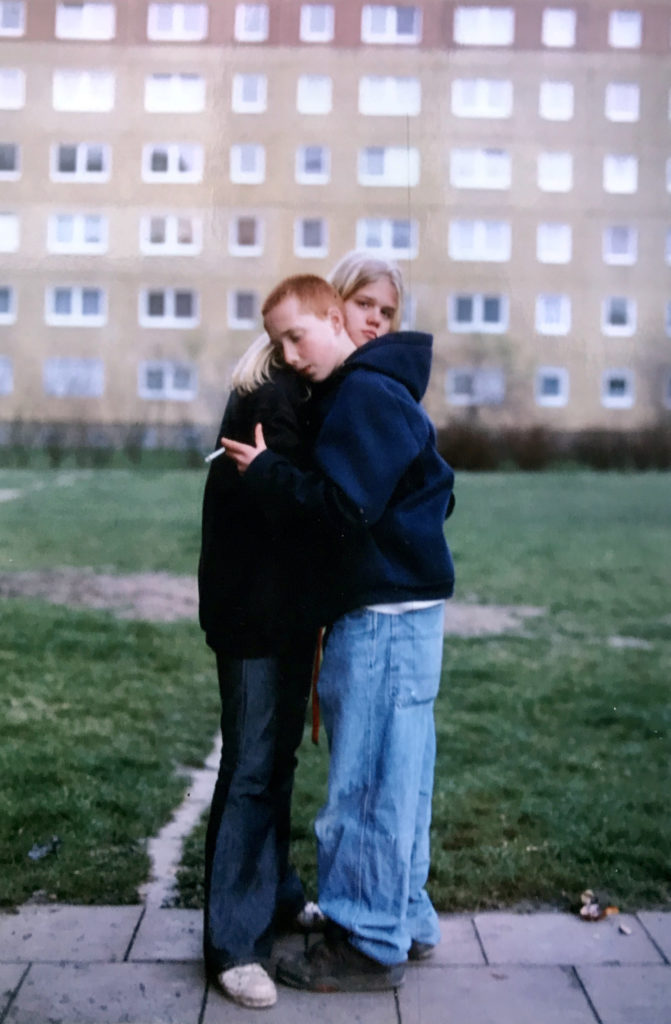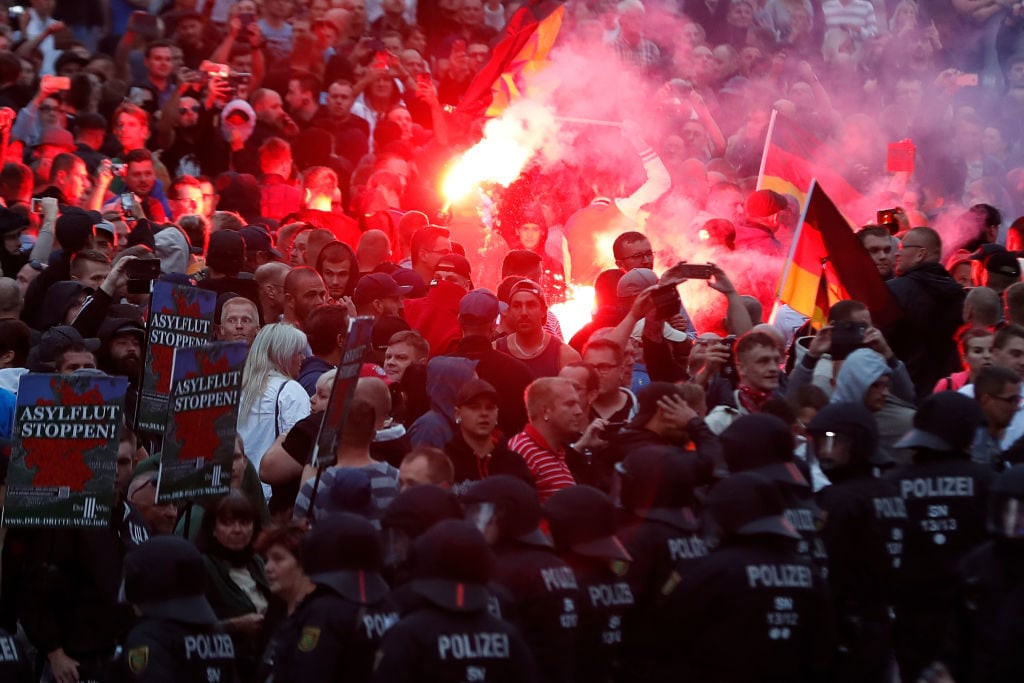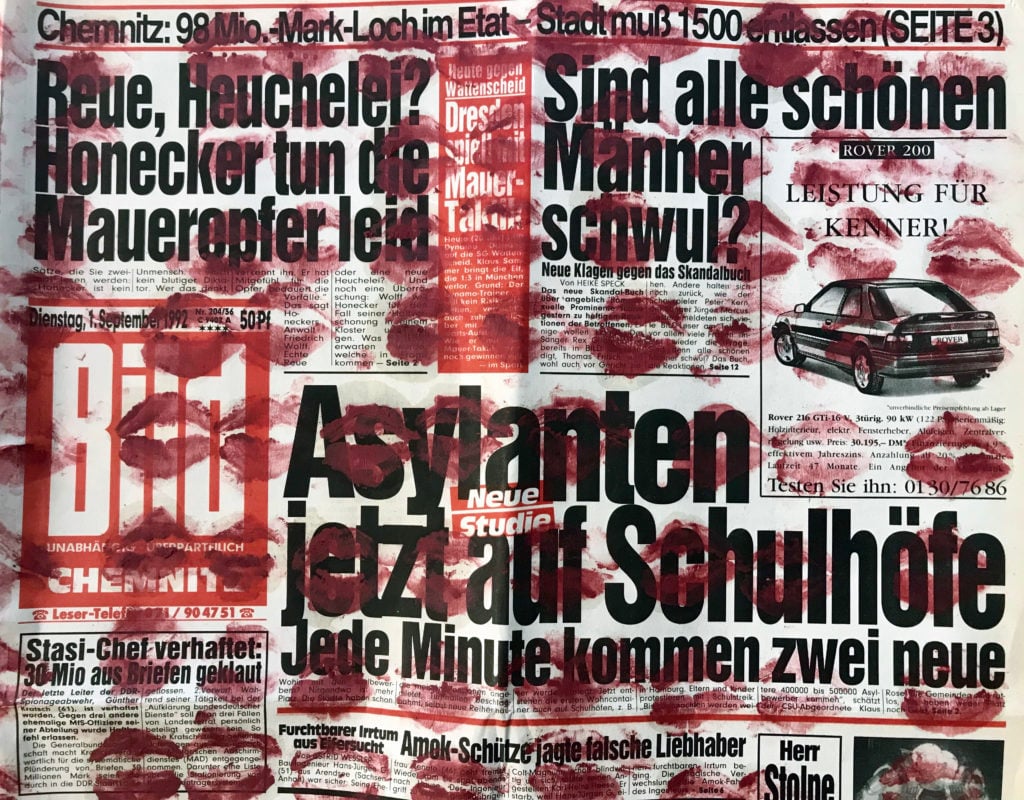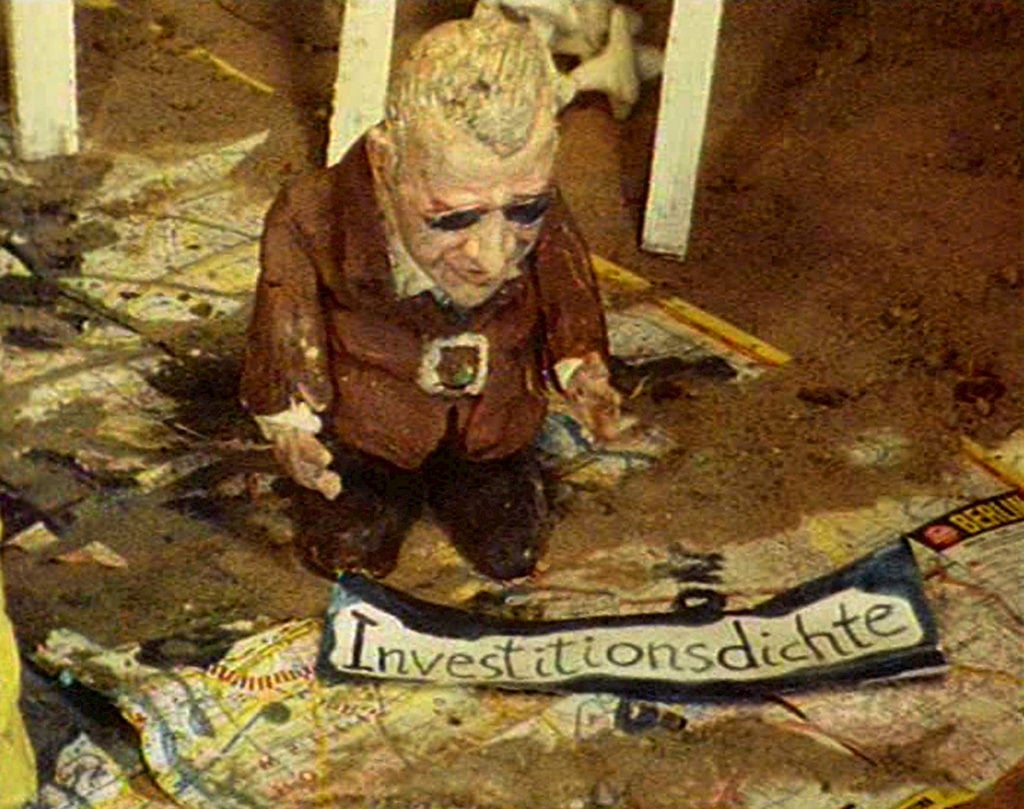Politics
‘Life Is Turning Into a Nightmare’: Berlin Gallery KOW Revamps Its Exhibition Program in the Eleventh Hour to Take on Germany’s Right Wing
The gallery has also published a manifesto-like essay in conjunction with the last-minute group show.

The gallery has also published a manifesto-like essay in conjunction with the last-minute group show.

Kate Brown

Most galleries plan their fall exhibitions months in advance. KOW Gallery gave themselves less than a week.
Surrounded by an escalating political crisis, the Berlin- and Madrid-based gallery decided to postpone its previously planned show and completely overhaul its exhibition program to address the recent violence in Chemnitz, Saxony and the “radical right-wing iceberg” they believe it symbolizes. The group show, brought together in the eleventh hour, features works by six artists including Alice Creischer, Tobias Zielony, and Henrike Naumann that deal with right-wing violence and the tumultuous history of the region. It opens tonight (September 7) in Berlin.
The former East German city saw an eruption of aggressive rioting by right-wing extremists over the past two weeks after it was leaked to the media that the August 25 death of a German citizen was connected to two detained suspects from Syria and Iraq.
“The gallery and the contributing artists want to take a stance at a time when political—and, for more and more people, everyday—life is turning into a nightmare,” begins the exhibition’s impassioned and articulated press release, which reads like a call to action for people in the art world and beyond. The gallery’s co-director Alexander Koch tells artnet News that KOW plans to reschedule the planned exhibition of work by Italian performance and video artist Marinella Senatore, which was originally scheduled to open on September 8.
The last-minute change comes after 6,000 right-wing protesters took to the streets in Chemnitz following the murder of a 35-year-old German citizen known as Daniel H. Crowds brandished German flags and signs with phrases including, “Refugees not welcome,” “Defend Europe,” and “Asylflut”—an offensive slang word used by the country’s far right that translates directly into “refugee flood.”
These demonstrations were soon met with counter-demonstrations, leading to an eruption of chaos in the city. Several violent incidents against non-white Europeans and other immigrants were reported and a number of extremists were detained for signaling the Nazi salute. This week, tens of thousands of people attended a free concert denouncing racism and xenophobia in Chemnitz, while Interior Minister Horst Seehofer defended the protests, calling migration “the mother of all problems.”
Artists, the gallery writes, “must confront the issues more vigorously than in the past and abstain from serving up symbolic fixes for disruptions that are in fact systemic.” And despite this sudden uptick of violence, the gallery’s exhibition text goes on to point out that anti-immigrant sentiment has been festering in the region, and the nation, for a long time. The nationalist and Eurosceptic party Alternative for Germany (AfD), who draw a hard line on immigration, won the most seats in Saxony during the last election in 2017. But even that wasn’t the beginning of its established right-leaning sentiment.

The far-right street movement PEGIDA called for a second day of protests in Chemnitz in ex-communist eastern Germany after the alleged fatal stabbing of a German man by a foreigner. (Photo by Odd ANDERSEN / AFP)
The show title “The Fuel of Your Lives Becomes Ashes in Ours” references graffiti that Tobias Zielony documented back in 2005 in Altenburg, a former East German town that neighbors the region of Saxony. Alongside Zielony are works by Henrike Naumann, Alice Creischer, Mario Pfeifer, Michael E. Smith, and Andreas Siekmann. Though the bulk of the show addresses the region’s extremism, many of the pieces are not new, instead taking on different points along the issue’s timeline.

Alice Creischer, Ohne Titel, 1992. Courtesy KOW Berlin.
Among the works in the show is a 2013 installation that investigates the neo-Nazi center in Chemnitz by Henrike Naumann, who grew up in Eastern Germany and experienced the right wing’s resurgence throughout her early life. Also on view is a 2016 work by East German artist Mario Pfeifer, who culled 18 hours of interviews with members of the AfD political party and Chemnitz citizens. (Pfeifer’s acclaimed video at the recent Berlin Biennial dealt with similar subject matter: he restaged a 2016 conflict in the East German town of Arnsdorf between grocery store cashiers and an Iraqi refugee.)
The show also includes German artist Alice Creischer’s painted pages of a local newspaper in Chemnitz that denounces asylum seekers, and Andreas Siekmann’s 2004 work focused on police punishment against taxi drivers in Saxony, who they believed were bringing in illegal migrants.
“Conflicts do not vanish just like that,” KOW writes in its statement. “We need a postcolonial discourse about the circumstances in which Germany was reunified—about what felt like, and in some ways technically was, the annexation of the former East by the West—and, in the global context, about the expansion of corporative capitalism in the last 30 years.”
Read the full statement from the gallery here.
The exhibition “The Fuel of Your Lives Becomes Ashes in Ours” opens tonight (September 7) and is on view from September 8 to November 10, 2018 at KOW Berlin.

Alice Creischer, Andreas Siekmann, Josef Strau, Amelie von Wulffen, Die krumme Pranke, 1997 (film still). Courtesy KOW Berlin.